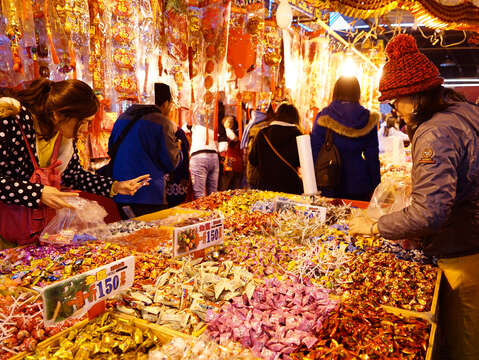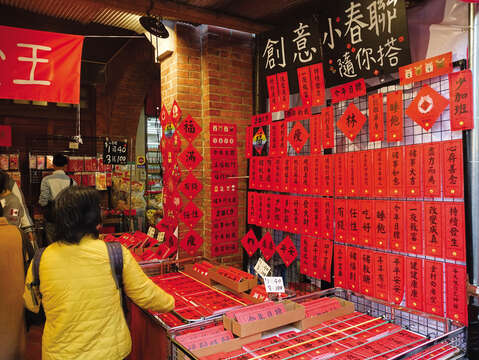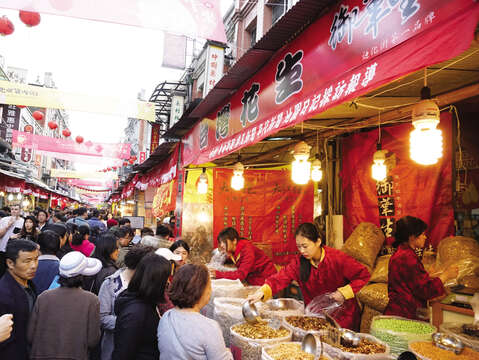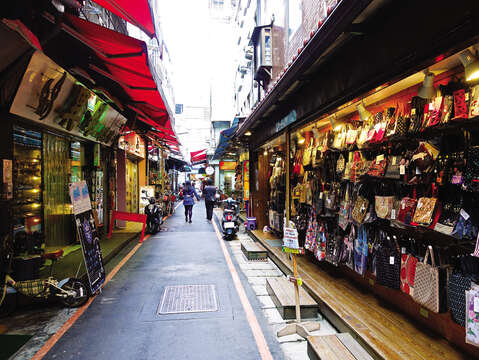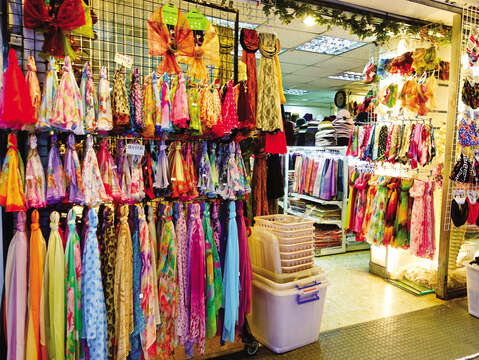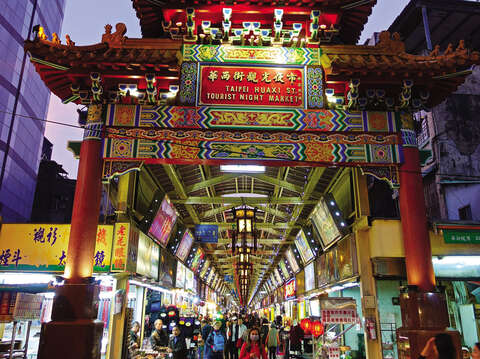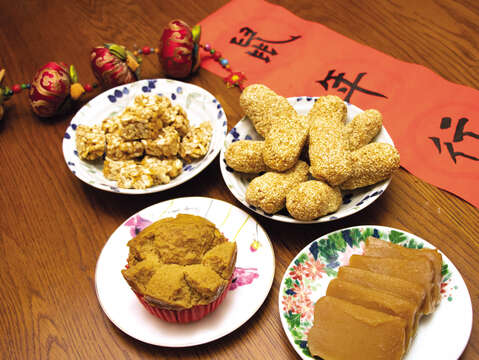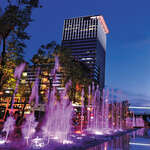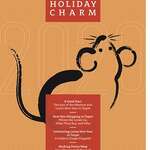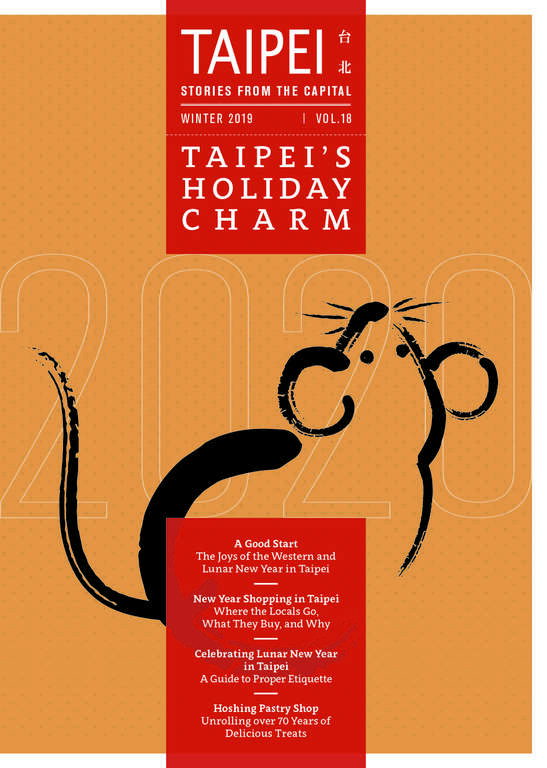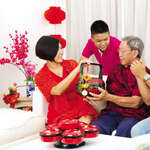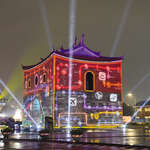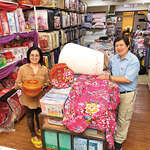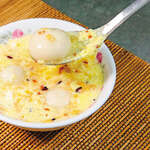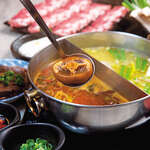Post date:2019-12-11
1304
New Year Shopping in Taipei
Where the Locals Go, What They Buy, and Why
WORDS BY Rick Charette
PHOTOS BY Liu Jiawen, MyTaiwanTour
As with Christmas, the Lunar New Year holidays are essentially a time of thankfulness — of festive family reunions and get-togethers with one’s dearest relatives and friends. And as with the Christmas season run-up to the big day, the period leading up to the first day of the Lunar New Year brims with warm, gleeful feelings and excited anticipation.
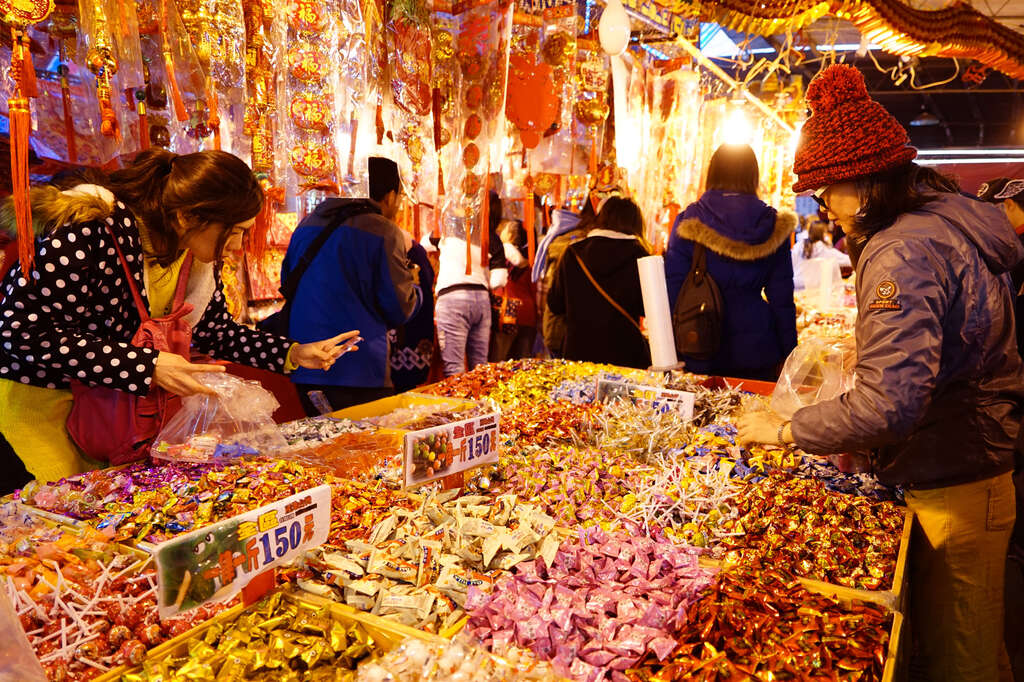 ▲Every year in anticipation of the Lunar New Year, crowds flow into New Year markets in Taipei to shop and prepare for the holiday. (Photo / Liu Jiawen)
▲Every year in anticipation of the Lunar New Year, crowds flow into New Year markets in Taipei to shop and prepare for the holiday. (Photo / Liu Jiawen) A cherished cultural centerpiece of these lead-in weeks is the joy of heading to busy and colorful New Year markets to stock up on nianhuo (年貨), literally “New Year goods,” meaning all the goodies, decorations, and other traditional items that fill homes with auspicious symbolism. There’s an impressive amount of stocking up to do, for during the long holidays there is near constant feasting and entertaining. Most food and snack items are bought beforehand, because most retail operators shut down operations, at least for the first few days of the holiday.
A Historical Aside: One theory on the determined holiday partying — throughout much of Chinese history, 90%-plus of the population have been farm folk, tedious work filling almost all days, the monotony interrupted only by a few annual festival breaks. People made the most of these, letting loose with abundance in all sensory stimulations, filling the celebrations with food, noise, and color. In the home, abundance in this was/is itself auspicious, inviting good fortune to flow in freely all through the year to come.
Another cherished cultural centerpiece that gives rise to wide-ranging shopping needs prior to the Lunar New Year’s Day is the concept chu jiu bu xin (除舊布新), or “driving out the old and bringing in the new.” Households are cleaned spic-and-span beforehand, debts are settled, etc. New items, particularly clothing, are purchased, and the tradition is to wear new apparel when the new year arrives. The idea is to dispel any ill-fortune to make room for a new beginning.
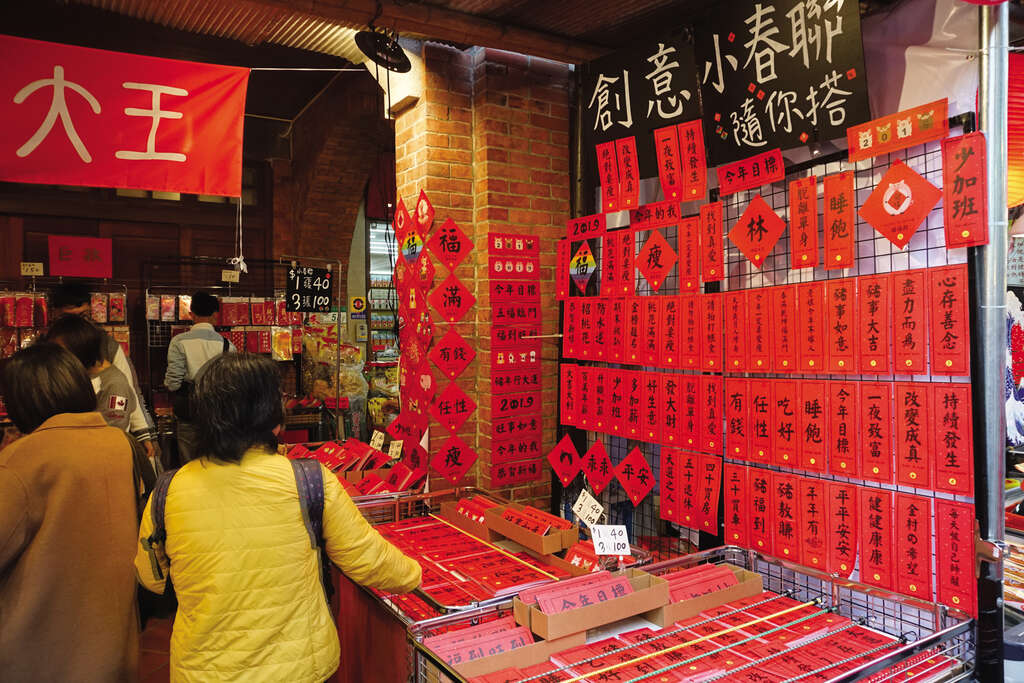 ▲There are lots of shops selling red envelopes and spring couplets in new year markets during Lunar new year. (Photo / Liu Jiawen)
▲There are lots of shops selling red envelopes and spring couplets in new year markets during Lunar new year. (Photo / Liu Jiawen)WHERE TO SHOP - POPULAR NEW YEAR MARKETS
The more visually florid and aurally raucous the better — this applies to the New Year markets as well, which see great seas of happy people, who come for necessities but also to enjoy the carnivallike hubbub. As you might know, the most auspicious color in Chinese culture is red, and you’ll see it everywhere, from the decorative lanterns festooning the streets to the colors of the necessities themselves.
Another Historical Aside: One theory about the origin of “auspicious red” is that it comes from the color of blood; i.e., that in days of yore farm animals were extremely precious commodities, and their liberal slaughter for New Year celebrations represented an abundance and good fortune.
Here are some quickie intros to three of Taipei’s most boisterous and popular New Year markets, which also happen to be, through no coincidence, among the most visited by international tourists.
DIHUA STREET LUNAR NEW YEAR SHOPPING AREA [ 迪化街年貨大街 ]
Old Dihua Street and its offshoot lanes form metro Taipei’s mecca for nianhuo shopping. Located in west Taipei’s Dadaocheng (大稻埕), one of the city’s oldest neighborhoods, Dihua street is Taipei’s oldest commercial street and its most important and best-preserved heritage thoroughfare. Shophouses began to sprout here in the mid-19th century, and it has been northern Taiwan’s most important entrepot for regional specialty goods since the late-1800s, notably for dry goods, with heavy concentrations of specialists in Chinese medicines and traditional fabrics as well.
In 1996, Dihua Street vendors organized the first version of the Taipei Lunar New Year Festival, which today runs two full weeks before the holidays. This is both a shopping and a cultural festival that educates visitors on New Year traditions while celebrating them. Today the festival, now overseen by the city government, encompasses numerous other New Year market areas as well, including the Railway Rear Station/Huayin Street (華陰街) shopping area introduced below.
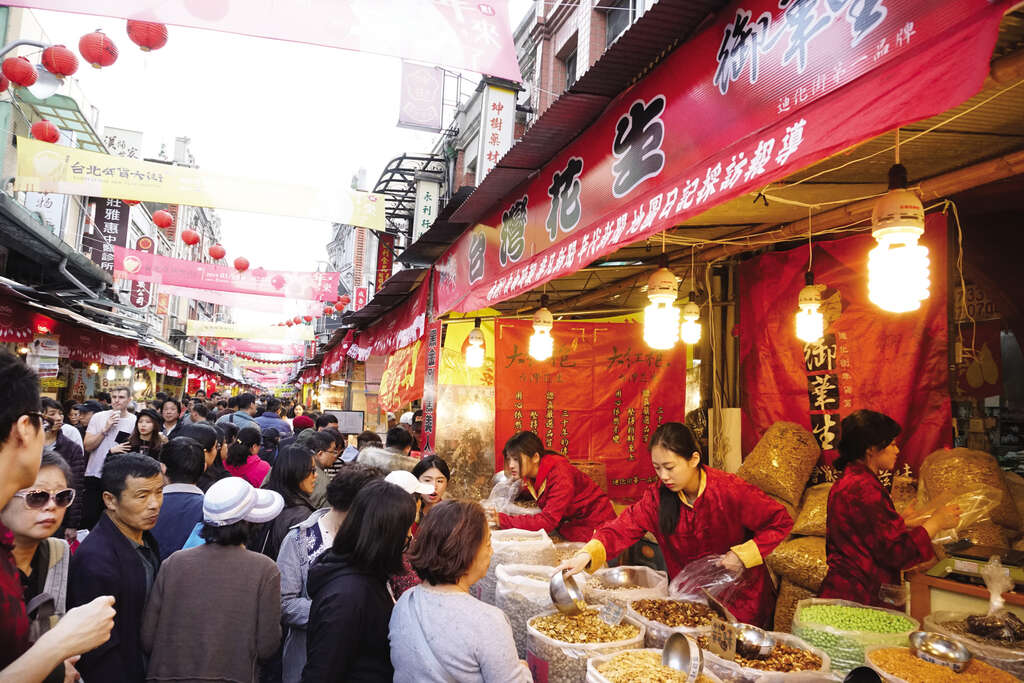 ▲Numerous choices of gifts and dry foods add to the already palpable New Year atmosphere on Dihua Street. (Photo / Liu Jiawen)
▲Numerous choices of gifts and dry foods add to the already palpable New Year atmosphere on Dihua Street. (Photo / Liu Jiawen)During the festival, proprietors set up stands outside their shops all along Dihua Street (and in the other zones), bursting with nianhuo treasure. There is a pronounced party atmosphere, with miked-up hawkers vying to outdo each other, streams of people ambling along window-shopping, and samples of goodies liberally provided.
A wide array of special theme activities are also staged at the various festival markets. On Dihua street, these are concentrated around the plaza fronting the famed Yongle Fabric Market (永樂布業商場), a multi-story building packed with sellers of traditional fabrics (note: second-floor shops also do custom-tailoring of qipao (旗袍), traditional men’s shirts, etc.). Also, Taipei’s mayor makes appearances to distribute “good fortune money” every year, and there are multi-language guided tours, special costume photo ops, AR photo ops, decorative displays highlighting New Year in different lands, street performers, art-experience sessions such as calligraphy sessions with masters helping you write auspicious couplets, and much else.
TAIPEI RAILWAY REAR STATION SHOPPING AREA — HUAYIN STREET [台北後站商圈 — 華陰街]
Dihua Street/Dadaocheng is in the north area of the city’s heritage-rich Datong District, which has the Tamsui River as its western border. The commercial area encompassing the Taipei Railway Rear Station Shopping Area and Huayin Street is directly north of Taipei Main Station, in Datong’s south. This area is very popular with commuters, students, tourists, and new immigrants/migrant workers. Every year before the Lunar New Year, each shop hangs red lanterns at the front door. People swarm in to get holiday decorations and new clothes, as the station is the city’s primary transportation interchange, and a famed bargain-hunting emporium.
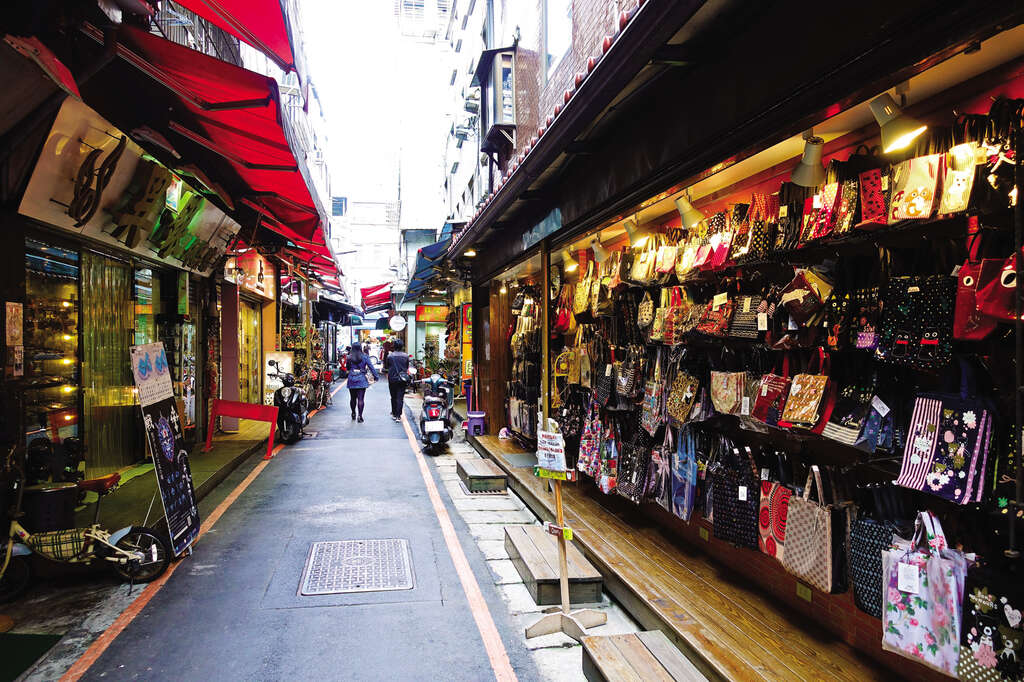
The station-rear grid, centered on Taiyuan Road (太原路), is packed with shops selling a mind-boggling array of trendy clothing and accessories, jewelry, handicrafts, daily-use items, home appliances, decorations, festival/holiday gifts, DIY materials, wrapping papers, and other merchandise. This area saw its commercial rise during the Taiwan Economic Miracle era, when it filled up with Taiwanese workers and students from the south seeking better opportunities, and as many as 50 career centers were in operation. Many of the special Taipei Lunar New Year Festival activities are centered on Taiyuan Square (太原廣場), aka Nostalgia Square (懷舊廣場).
Expect to be regaled with the heady fragrance of worked leather when you browse narrow Huayin Street, known for wholesale leather products along with luggage items, apparel, cosmetics, and beauty products. The street’s New Year special activity, praying for blessings, are concentrated around Puji Temple (普濟寺).
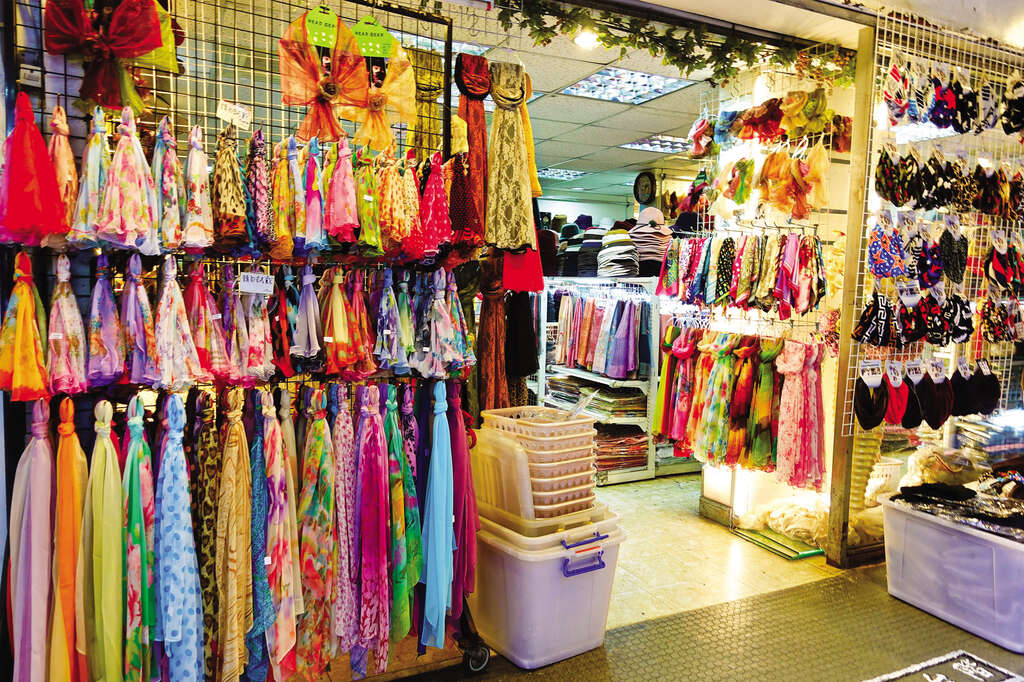 ▲Huayin street is known for selling clothing and daily items, offering people in Taipei a place to “drive out the old and bring in the new.” (Photo / Liu Jiawen)
▲Huayin street is known for selling clothing and daily items, offering people in Taipei a place to “drive out the old and bring in the new.” (Photo / Liu Jiawen)BANGKA — HUAXI STREET NIGHT MARKET [艋舺 — 華西街夜市]
Bangka (艋舺), or Wanhua District, was the first area settled in what is today Taipei, and its Huaxi Street Tourist Night Market (華西街觀光夜市) is one of the city’s most venerable. Also known as Snake Alley (蛇街), its main claim to fame is, yes, snakes. Since ancient times, snake has been seen as a nourishing, health-enhancing food. Market eateries serve the meat, blood, etc. in soups, wines, and cooked dishes. Some of this market’s other highlight attractions are braised pork on rice, aiyu jelly (愛玉冰), shaved-ice treats, thick cuttlefish soup, and traditional Chinese massage parlors.
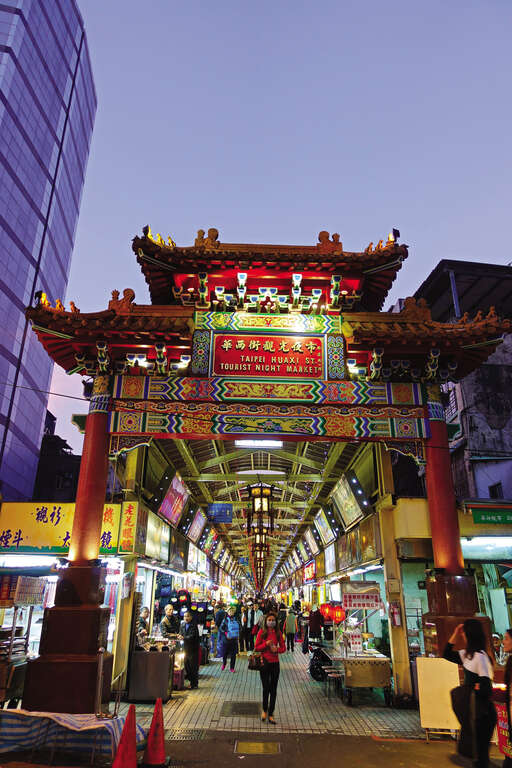 ▲Huaxi Street Tourist Night Market is not just busy during the Lunar New Year, but can be full of people even on a regular weekday. (Photo / Liu Jiawen)
▲Huaxi Street Tourist Night Market is not just busy during the Lunar New Year, but can be full of people even on a regular weekday. (Photo / Liu Jiawen) Whereas the city in general is quiet on Lunar New Year’s Eve, things are festively raucous at the major temples and tourist night markets. This night market is close to Taipei’s oldest Buddhist temple, the magnificent Longshan Temple, which dates back to 1738 and is a tourist favorite. Many people come out for “new beginning” prayer at temples in the wee hours of Lunar New Year’s Day, a time seen to be especially efficacious, and hit the night market before and/or after. Also bringing streams of revelers is the belief that staying up late on Lunar New Year’s Eve adds to parents’ longevity, which creates late-night rumbling tummies.
A Few Words of Advice: When I said earlier that the New Year markets “see great seas of happy people,” there was no hyperbole. Said seas are densest in the week right before the holidays, so if you tend to get a little claustrophobic, go in the weeks prior. As well, parking in these areas is almost impossible, even for scooters, so use public transport. All three markets showcased here have Taipei Metro stations nearby.
WHAT TO BUY
THE SYMBOLISM BEHIND SOME FAVORITE NIANHUO CHOICES
As explained earlier, wearing new clothing at the Lunar New Year, especially red items, is itself auspicious. But take things a step further with one-of-a-kind embroidered clothing, accessories, and footwear treasures from Little Garden (小花園), located behind Dihua Street’s visitor center (on Lane 32). This family business began in Shanghai in 1936; the Chinese Civil War brought the founder to Taipei in 1949. There are traditional-style shoes, qipao, kid’s outfits, and more, plus stylish purses, scarves, and other designer works. The embroidery visuals all have auspicious meaning — goldfish, for example, symbolize wealth (resembling ancient Chinese gold ingots), and dragons symbolize royalty/nobility (and by extension, elevated position).
In Chinese, the words for “cake” and “high” are both pronounced gao, and thus various traditional baked items are required nianhuo purchases. One is a sweetened sticky-rice cake called nian gao (年糕), literally “New Year cake,” which represents the auspicious expression “nian nian gao sheng (年年高升)”, meaning “year by year ever higher.”
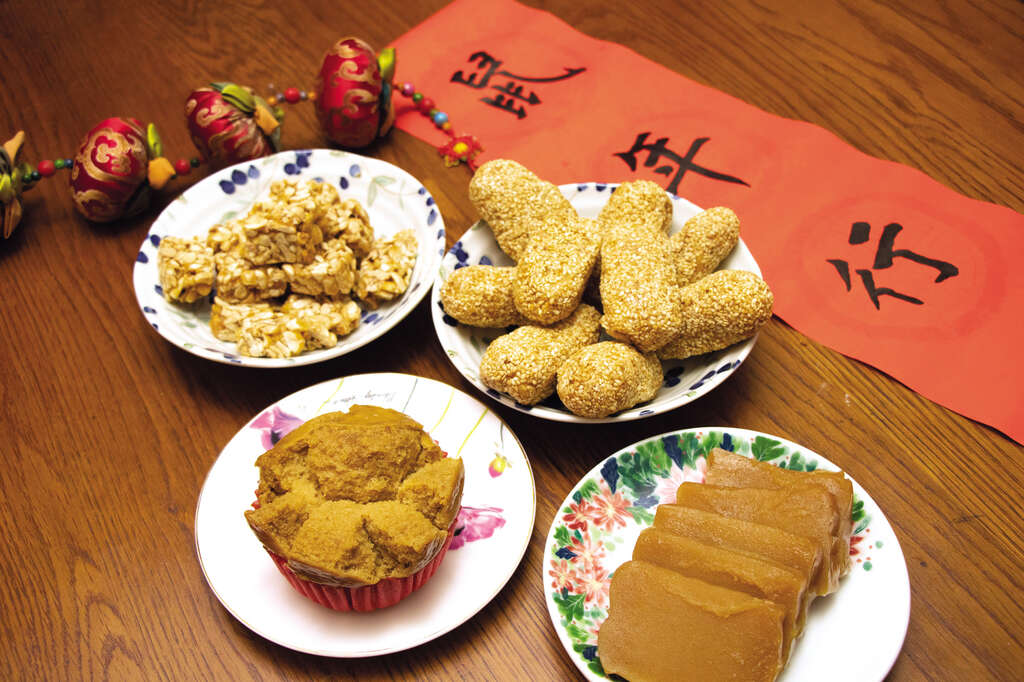 ▲Nian gao, fa gao, peanut brittle and malao are very popular food/gift options during the Lunar New Year. (Photo / MyTaiwanTour)
▲Nian gao, fa gao, peanut brittle and malao are very popular food/gift options during the Lunar New Year. (Photo / MyTaiwanTour)Another is called fa gao (發糕), a steamed, lightly sweetened spongy rice-flour cupcake. The name literally means “prosperity cake”; “fa” means “emit/ burst forth,” and here denotes the rising up or “bursting” of the little cakes and the “bursting forth” of wealth, as in the expression “fa cai” (發財), or “get rich.”
In the Taiwan of earlier times, sweet treats were something largely reserved for the rich at Lunar New Year. The masses instead ate nuts and seeds as their special treats. Today families are fond of placing things like pistachios and sunflower seeds on living-room coffee tables as nostalgia-inducing facilitators for family-reunion chatting.
Sweets, as one might expect, are a favorite New Year treat, especially with youngsters. An old-time rhyming expression goes “chi tian tian, zhuan da qian (吃甜甜,賺大錢)”, literally “eat sweet after sweet, make big money.” The expression’s tian tian, meaning “sweet upon sweet,” is a homonym for “day by day” (天天). Among the myriad sweet New Year candies and other confections you’ll no doubt find delectable are peanut brittle and malao (麻粩), and fried maltose cookies, sometimes called “Taiwanese rice crispies.” Such treasures are especially recommended as gifts if visiting local families during the season, and are good take-home gifts as well because of their longevity.
Gallery
Popular articles
 TAIPEI Quarterly 2019 Winter Vol.18
TAIPEI Quarterly 2019 Winter Vol.18 Celebrating Lunar New Year in Taipei: A Guide to Proper Etiquette (TAIPEI Quarterly 2019 Winter Vol.18)
Celebrating Lunar New Year in Taipei: A Guide to Proper Etiquette (TAIPEI Quarterly 2019 Winter Vol.18) Everything Is Illuminated — Taipei During the Lantern Festival (TAIPEI Quarterly 2019 Winter Vol.18)
Everything Is Illuminated — Taipei During the Lantern Festival (TAIPEI Quarterly 2019 Winter Vol.18) Rui-Cheng Embroidered Red Calabash Passed down Through Five Generations of Warm Winter (TAIPEI Quarterly 2019 Winter Vol.18)
Rui-Cheng Embroidered Red Calabash Passed down Through Five Generations of Warm Winter (TAIPEI Quarterly 2019 Winter Vol.18) Handmade Tangyuan — Every One a Treasure unto Its Own (TAIPEI Quarterly 2019 Winter Vol.18)
Handmade Tangyuan — Every One a Treasure unto Its Own (TAIPEI Quarterly 2019 Winter Vol.18) Warming, Hearty, Comforting Year-End Hot Pot Gatherings (TAIPEI Quarterly 2019 Winter Vol.18)
Warming, Hearty, Comforting Year-End Hot Pot Gatherings (TAIPEI Quarterly 2019 Winter Vol.18)
 New Year Shopping in Taipei (TAIPEI Quarterly 2019 Winter Vol.18)
New Year Shopping in Taipei (TAIPEI Quarterly 2019 Winter Vol.18)